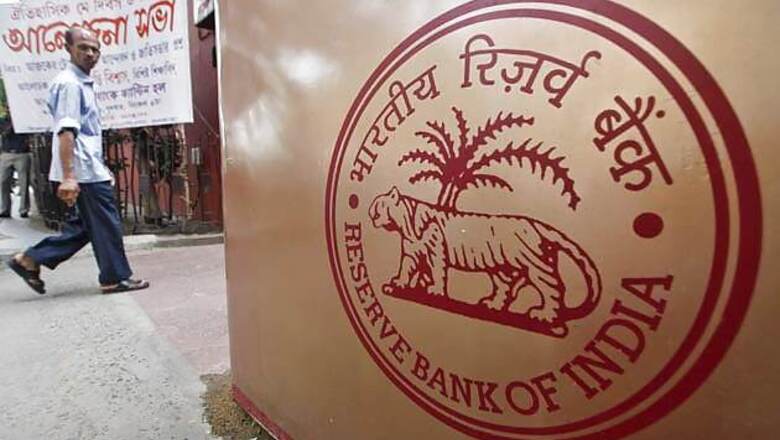
views
Mumbai: The Reserve Bank Thursday capped the average exposure limit for an NBFC to issue infra debt funds at 50% and maximum at 75% of its total capital fund, apart from limiting such issuance to only PPPs which have been successfully operational at least for a year.
The central bank announced these changes in a new circular that amends the November 2011 guidelines which sought to allow non-banking finance companies to sponsor infra debt funds (IDFs).
Accordingly, the RBI has allowed NBFCs to invest only in PPP projects which are at least one year into commercial operations and assigning a risk weight of 50%.
"An IDF-NBFC can invest in individual projects up to 50% of its total capital funds. An additional exposure of up to 10% could be taken at the discretion of the board of the IDF-NBFC," RBI said in the amended circular.
The RBI further said that it may, upon specific request, allow an IDF-NBFC an additional exposure up to 15% (over 60%) subject to such conditions as it maydeem fit to impose regarding additional prudential safeguards.
This has been enabled after amending the maximum exposure limit norms as envisaged in para 8 of the November 21, 2011 direction, RBI said. The RBI has also amended para 7 of these directions.
The RBI said NBFCs can invest only in PPPs and post-commercial operations date infrastructure (COD) projects which have completed at least one year of commercial operations.
The new rules also say that NBFCs should also enter into a tripartite agreement with the concessionaire and the project authority to ensure a compulsory buyout with termination payment before sponsoring any funds.
The new norms are particularly aimed at those projects where there is no project authority present.
"On a review in consultation with the government, it has been decided to amend the November 2011 directions to allow entry of IDF-NBFCs into infra sector," RBI said in a circular.
IDF-NBFCs are also allowed to undertake investments in non-PPP projects and PPP projects without a project authority, in sectors where there is no project authority, provided these are post-COD infra projects which have completed at least one year of commercial operation.
On the risk weights to assess the capital adequacy, the circular said that as per the extant instructions, bonds of IDF-NBFCs and all assets of infra finance companies covering PPP and post-COD projects shall be assigned a risk weight of 50%.
The RBI further said that to bring in uniformity, it has been decided to extend the same to all NBFCs - that is all assets, including bonds and loans, covering PPP and post-COD infra projects.
Investments in non-PPP projects shall be risk weighted as per the extant regulations as given in the systemically important non-deposit taking NBFCs.




















Comments
0 comment